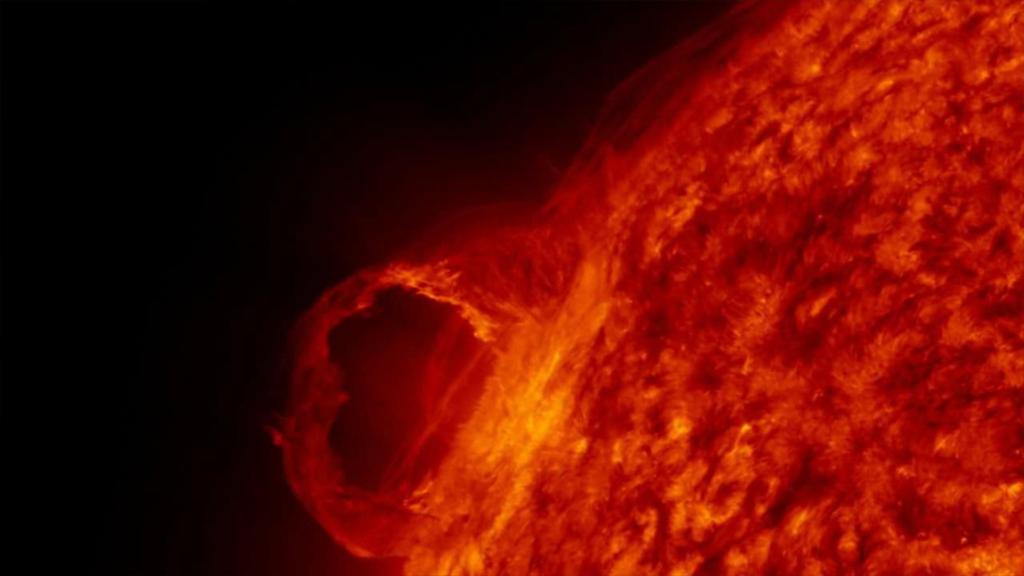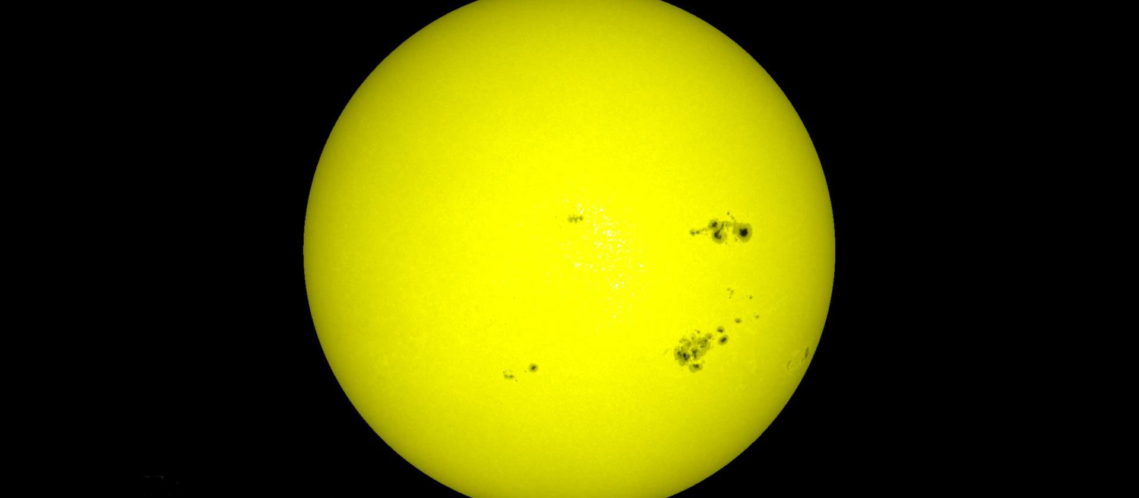I am a fan of disaster movies. I have grown in the 90’s and 00’s, at a time where Hollywood started a trend of summer blockbusters that usually involved alien invasion, or volcanoes and other gigantic threat that was supposed to threaten the existence of Humanity. We had it all: Independence Day, Volcano, Armageddon, Deep Impact, 12 monkeys, etc… Spectacular and frightening.
Most of these movies are special, in the sense that they depict events that are very unlikely to happen during our lifetimes. I mean volcanoes are a real threat, there is the whole super-volcano threat in the Yellowstone that is supposedly going to explode in a week or in 1000 years.
There is always a threat of collision with a large Near Earth Object, an asteroid whose path crosses that of our planet. That could happen also very quickly and we would most likely just have a few days to come to term with that. But fortunately for us, such event happens rarely. The impact of a 1-2 km diameter asteroid with earth should happen on average once every million years [1].
The pandemic threat, obviously… No need to mention what we all went through because of Covid. Other viruses and bacteria can create pandemics and it happens relatively often, several time per century on average from my observation, but it doesn’t really threaten civilization. We adapt quickly to them fortunately.
Yet, one catastrophic event happens relatively often, in the order of once per century and has the potential of wreaking havoc to a much higher level than any pandemic could: It’s a Carrington event [2].
What is a Carrington event?
A Carrington event is named after an amateur astronomer, Richard Carrington [3], who observed the sun as a hobby and one day in September 1859, discovered a large number of sunspots over a wide area on the surface of the sun. These sunspot eventually were a precursor of a powerful coronal mass ejection (CME). This CME, which is another word for Solar eruption, caused an overload in the electrical grid of Canada, the Northen US and to some extent Europe. The CME was so powerful it triggered auroras that were visible in the Caribbean, when they are usually hovering above the polar circles [4].
Another such event, although much smaller happened not long ago, in March 1989. The region of Quebec was left with no electricity for 9 hours, communications with satellites were failing and other annoying effects with electronics and transformers [5].

What exactly is a CME? Well, to simplify, the sun is a huge constant nuclear reactor in open sky, so to speak, where atoms fuse together under the intense gravity and heat. Stars normally convert simple Hydrogen atoms into Helium atoms. Once heavier elements are formed, other heavier elements can be formed and so on, till Iron is formed, which is the heaviest element a star is able to fuse under “normal” conditions. The fusion and fission reactions releases energy, photons. It also releases protons, neutrinos, gamma radiation, and other nasty things…
One interesting fact is that the energy of photons generated at the core of the sun by these reactions can take millennia to reach the photosphere, the surface of the sun that we actually see, and the chromosphere, the sun’s equivalent to the lower atmosphere. It is tempting to say that the photon born in the centre of the sun is the same than the one exiting, but it most likely is not, as photons get absorbed and emitted quite easily. Hence why I say it is the energy that takes millennia to reach the photosphere. Still, it’s pretty amazing, no?
While it is travelling from the core to the photosphere, this energy from the fusion and fission reactions create a plasma composed of ionized atoms, electrons and protons. Sometimes, the magnetic fields of the sun crosses, snap and reconnect. It is during those events that plasma gets accelerated by the electromagnetic fields, projecting the plasma in space, alongside with the generation of X-rays. This is a CME or Solar eruption [6].
The CME event frequency is correlated to the sun’s cycle that spans over 11 years, with calm periods with almost no eruptions and periods of intense activity, with eruptions, flares and CME almost daily. We typically can track those periods based on the number of active sunspot. During active years, the sun has almost no day when there is no sunspot. The higher the number of sunspot, the higher the risk of a eruption. As it turns out, we exited such a period in 2019. The sun is getting more and more active, with more flares and CME in store.

The Earth is actually protected against the solar wind and the smaller CME, thanks to the Earth’s natural magnetic field. The charged particles from the solar wind are deviated and usually fall back on earth at around the poles, creating the auroras. I think I’ll talk about the colours of auroras in another post in more detail, it’s rather interesting how some auroras are pink, others are green or blueish…
But I hear you! you say: the ISS passes through auroras regularly. So what’s the problem?
Well, for starter, the computers on board of the ISS and the electronic systems are designed with that in mind. Same can be said for a lot of satellites.
Second, normal solar wind and small CME’s are nothing against a Carrington Event where we have a powerful CME with a direct hit on Earth. The magnetic field that usually protects us from the solar wind is not strong enough to protect the earth from such a blast. The effects of this kind of event can be disastrous on electronics. Especially electronics in space, since they are less protected by the magnetosphere. But in this case, it also has effects on electronics on earth.
What we can expect from such an event is the destruction of most electronics in satellites not sufficiently rad-hardened, leading to failing communications and GPS signals among other things. On earth, it can lead to transformers overloading which leads to loss of electricity over the whole grid of the affected places. Small electronics are destroyed, hard drives are wiped… It can be catastrophic [7].
Why? Because of the induced current from the high energy particles and electromagnetic fields… When those particle hit electronics, they can strip electrons from the circuit metal parts and short critical logic gates and other transistors, leading to unwanted effect, that can culminate to plain destruction of the electronic device if they are really sensitive [8][9].
How can we prepare? If the sun sends a CME to earth, that’s it. We can’t deflect it, we can’t reduce its impact. We’ll most likely have just a few days (1 or 2 top) to get ready and limit the damages. Satellites are constantly looking at the sun, see SOHO, STEREO A and B and ACE. The NOAA agency is constantly giving updates and if a bunch of dangerous sunspot appear and point in our general direction, they will give a warning.
The easiest immediate way to limit the effects is to disconnect all sensitive electronics from power supplies. It is also possible to protect electronics to some extent by wrapping aluminium paper around them, creating a good layer between the harmful ions and the sensitive elements. I suspect that SSD memory cards and discs might be very sensitive to this kind of perturbation, which is bad news as a lot of computer now use these kind of memories as permanent memory, which is most computers nowadays.
It is also possible to simply shut the power grid in advance of the CME impact… Not a small decision to take, especially given the equipment that needs to run non stop in hospitals for instance.
So it’s not totally impossible to prepare for this kind of event, but we need to prepare way before it happens. Once it happens, the Lloyds report [10] estimates that the electricity grid in the affected area could be cut from anywhere between 16 days to 2 years in relatively populated and wealthy areas of the United States. Imagine if it happens around emerging and developing countries. The worst part is that it is going to happen one day. And that day will be by far be the worst day our civilization will have to endure. Maybe the best way to prepare for such an event is to quickly move toward more efficient energy infrastructure, new energy sources, move to photonic computers, have storage deep inside the earth, protected by km of layer of stone and dirt, or store data in optical forms instead of the usual electronic circuits.
On that last point, CD and DVD’s are obviously a good choice to store data in this kind of event. I also need to mention holographic data storage inside a transparent, glassy object. Not only because such medium is actually more stable than, say, a USB key, Carrington Event or not. It is also super futuristic, and I would love to work on such a project! Also a future post!
For now, I guess it’s good to keep an eye on the sun and how the weather is out there in space. For that, I usually check https://www.spaceweather.com/ and https://www.swpc.noaa.gov/.
Update 30 october 2021: Eh. Cycle 25 starting strong…
Sources
[1] https://astronomy.com/bonus/asteroidday
[2] https://en.wikipedia.org/wiki/Carrington_Event
[3] https://en.wikipedia.org/wiki/Richard_Christopher_Carrington
[4] https://www.sciencedirect.com/science/article/abs/pii/S0273117705012093?via%3Dihub
[5] https://en.wikipedia.org/wiki/March_1989_geomagnetic_storm
[6] https://en.wikipedia.org/wiki/Coronal_mass_ejection
[8] https://science.howstuffworks.com/solar-flare-electronics.htm
[9] https://www.tbray.org/ongoing/When/202x/2021/10/08/The-WOrst-Case
